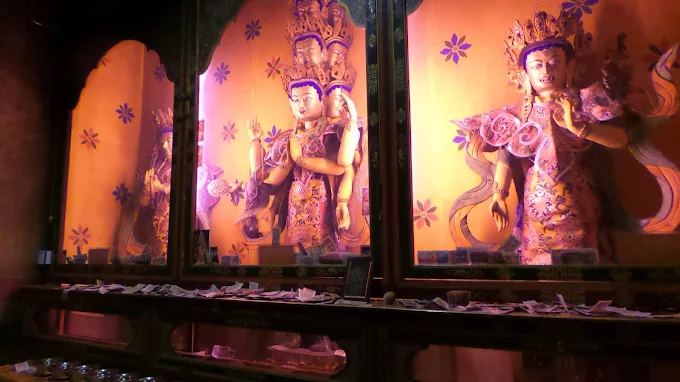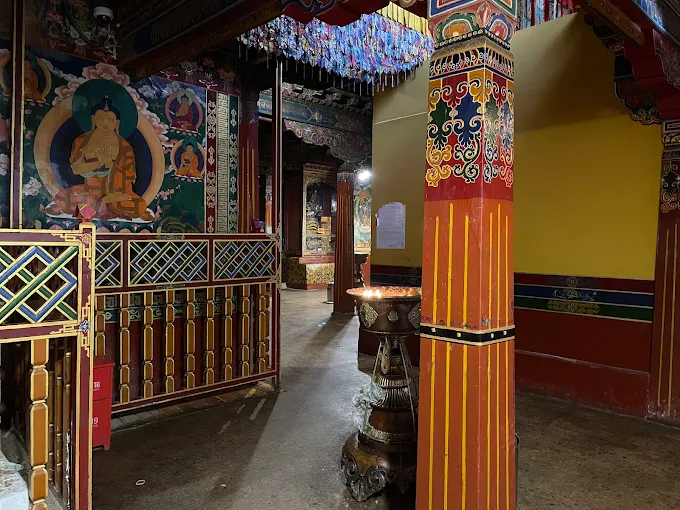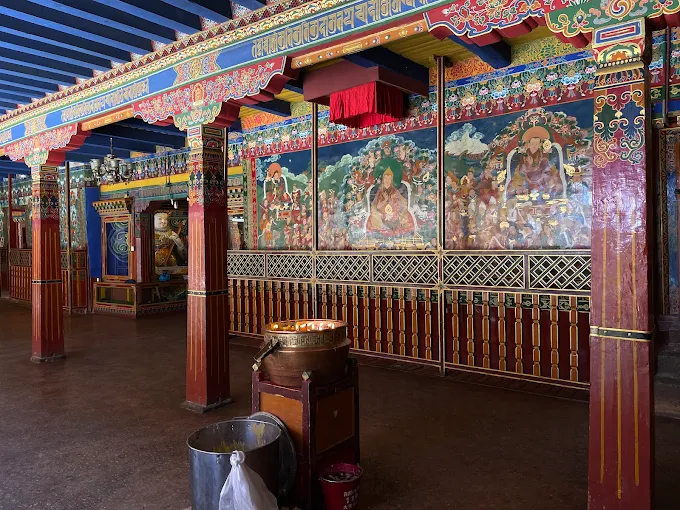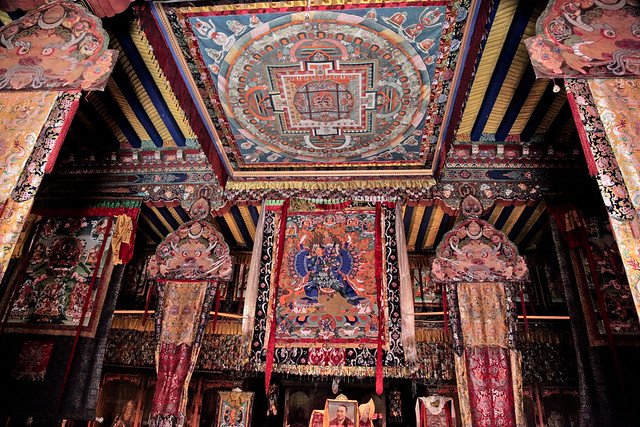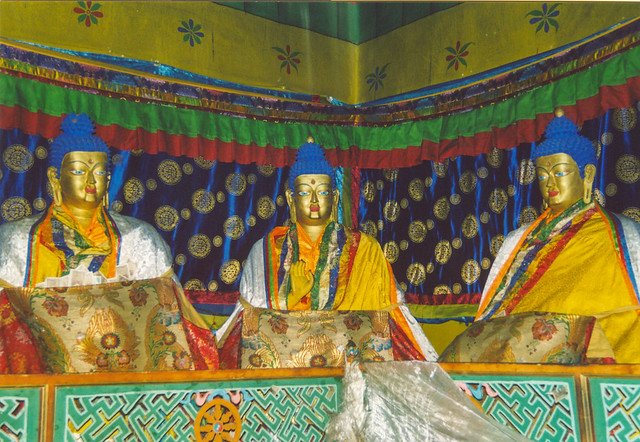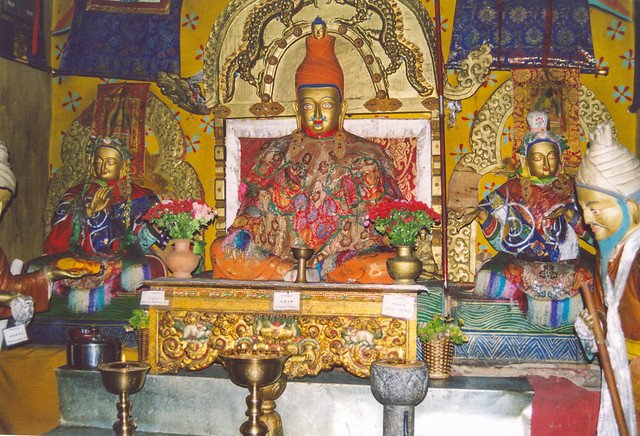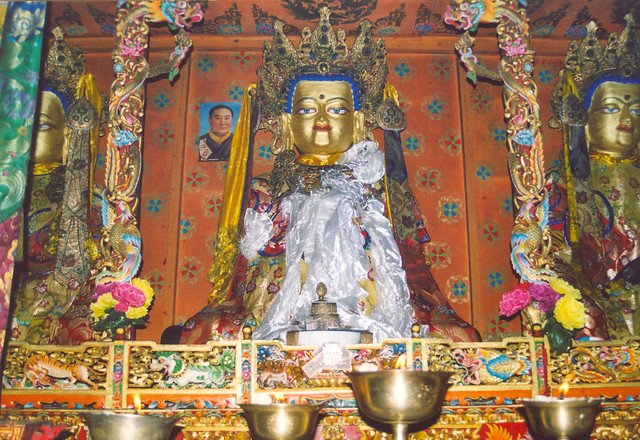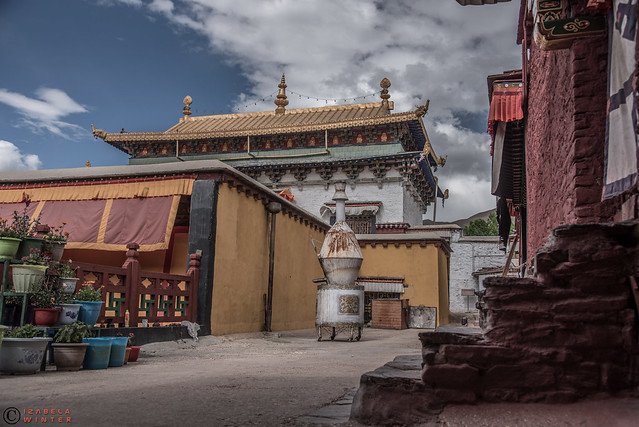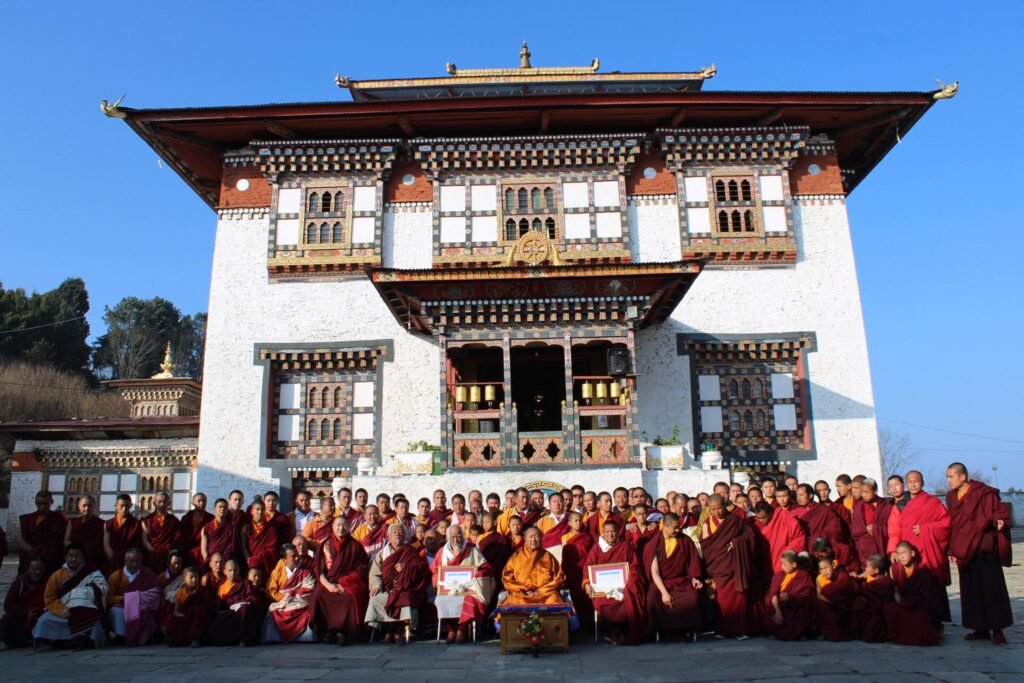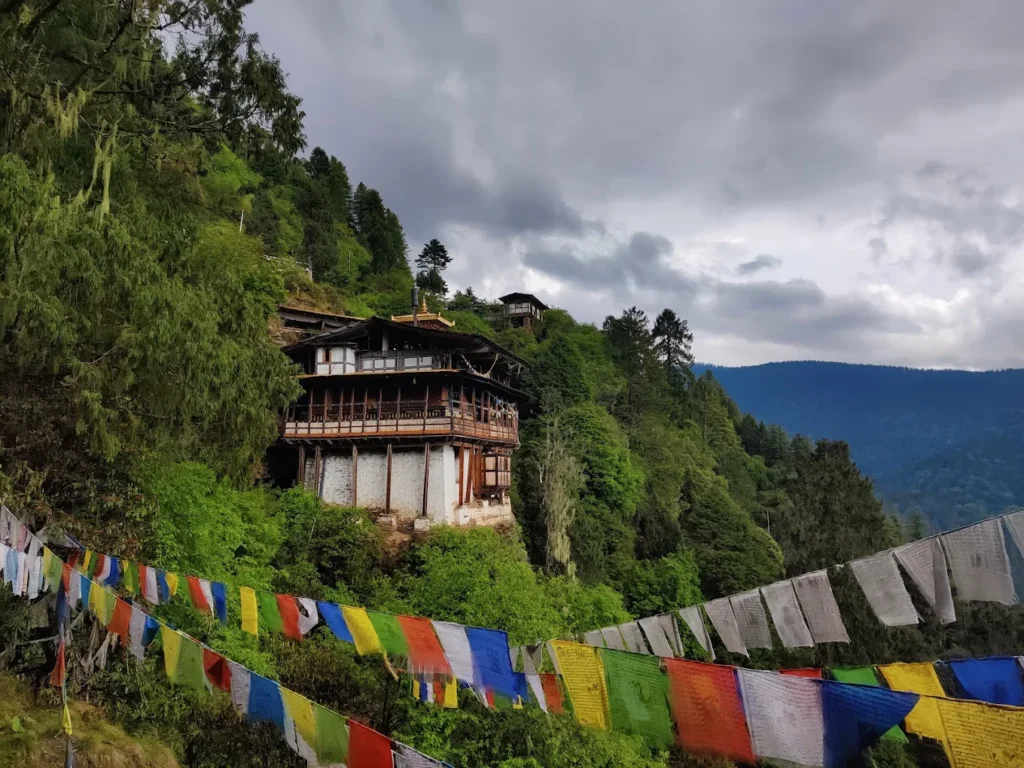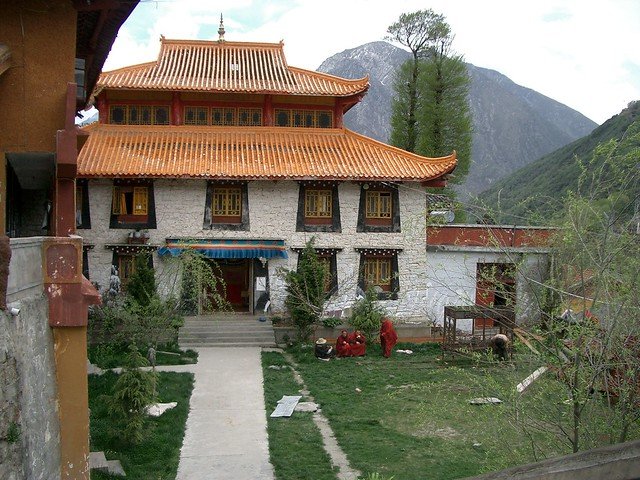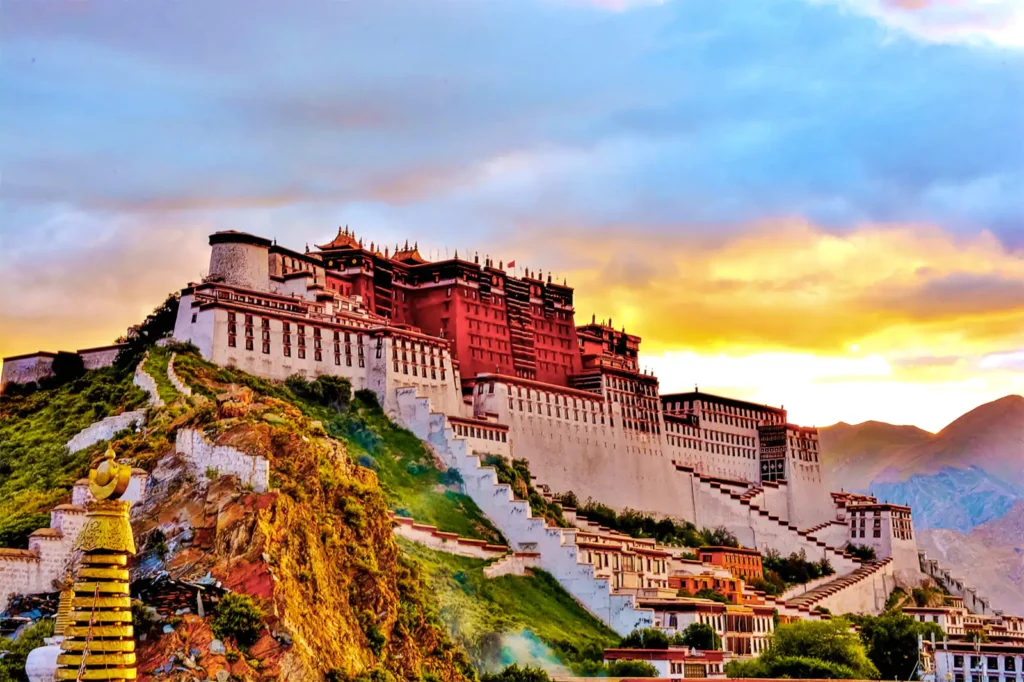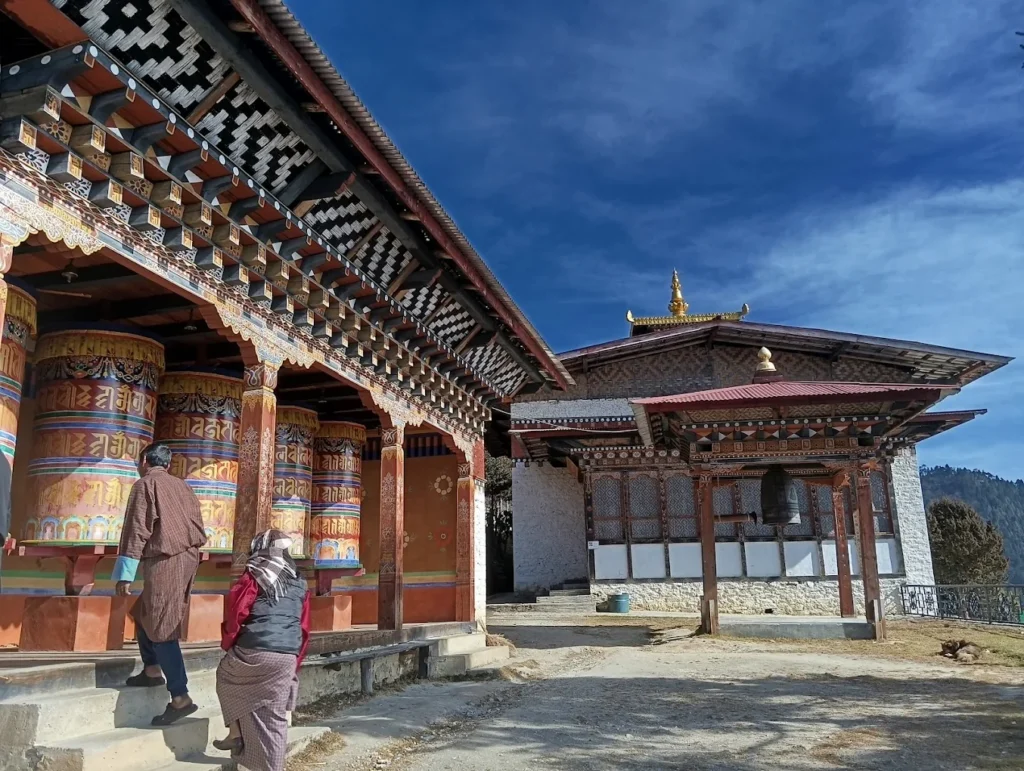Tradruk Monastery: The Pearl-Embroidered Sanctuary of Tibet’s Dawn
Tradruk Monastery, nestled in the fertile Yarlung Valley near Tsedang, Tibet, glows as one of Tibet’s oldest Buddhist sanctuaries, its sacred halls echoing the 7th-century reign of King Songtsen Gampo. Founded around 641, this Nyingma sect gem is famed for its pearl-embroidered Tangka of Chenresig (Avalokiteshvara), a priceless relic woven by Princess Wencheng. At 3,500 meters, Tradruk’s whitewashed walls and golden roofs shimmer against the valley’s lush fields, captivating pilgrims and travelers with its ancient allure. This immersive listing unveils Tradruk’s essence, guiding you through its storied past, architectural charm, sacred rituals, and practical visitor insights, offering a journey into a cradle of Tibetan spirituality.
The Ancient Spirit of Tradruk
Essence of Tradruk Monastery
Tradruk Monastery radiates a timeless spiritual serenity, embodying Tibet’s early embrace of Buddhism under King Songtsen Gampo. Established around 641, it stands as one of Tibet’s three holiest temples, alongside Jokhang and Ramoche, revered for its Nyingma sect devotion. Its defining treasure—a pearl-embroidered Tangka of Chenresig, crafted by Princess Wencheng—draws devotees seeking compassion’s blessings. Tucked in the Yarlung Valley, Tradruk’s tranquil setting invites reflection on Tibet’s spiritual origins.
- Spiritual Core: One of Tibet’s oldest Nyingma monasteries.
- Iconic Feature: Pearl-embroidered Chenresig Tangka.
- Cultural Role: Cradle of early Tibetan Buddhism.
Historical Evolution
Tradruk’s story began around 641 when Songtsen Gampo, Tibet’s unifier, built it as one of 12 demon-suppressing temples to pin a mythical ogress, with Tradruk anchoring her left elbow. Princess Wencheng, his Tang Dynasty bride, gifted the pearl Tangka, cementing cultural ties. Expanded in the 14th century by Tai Situ Jangchub Gyaltsen, it flourished until the Cultural Revolution damaged its halls. Restoration since 1988, funded by state grants and local devotees, revived its core, earning it a 2006 national cultural relic status.
- Founding: Built ~641 by Songtsen Gampo.
- Expansion: Flourished in 14th century under Tai Situ.
- Restoration: Revived since 1988, national relic in 2006.
Cultural Impact
Tradruk’s establishment marked a pivotal shift, spreading Buddhism across Tibet alongside Jokhang. Its pearl Tangka, one of three sacred embroideries, symbolizes Tang-Tibetan unity, studied via HimalayanArt.org. Annual festivals, like the Cham dance, preserve Nyingma traditions, drawing Yarlung Valley pilgrims. Globally, Tradruk inspires scholars, with works like R.A. Stein’s Tibetan Civilization highlighting its role in Tibet’s Buddhist dawn, resonating with Himalayan communities.
- Buddhist Spread: Early catalyst for Tibetan Buddhism.
- Tangka Legacy: Symbol of Tang-Tibetan cultural fusion.
- Global Reach: Inspires scholars, Nyingma devotees.
Signature Legacy
The pearl-embroidered Chenresig Tangka, woven by Princess Wencheng in the 7th century, is Tradruk’s crowning jewel, its 2-meter-high silk adorned with thousands of pearls, displayed annually. A sacred bronze bell, cast under Songtsen Gampo and inscribed with mantras, hangs in the main hall, believed to ward off evil. A legend recounts how the Tangka’s pearls glowed during its consecration, signaling divine approval. These relics anchor Tradruk’s spiritual and historical identity.
- Pearl Tangka: 7th-century Chenresig embroidery.
- Bronze Bell: Songtsen Gampo’s protective relic.
- Glowing Pearls Legend: Divine consecration tale.
Community and Global Reach
Yarlung Valley locals cherish Tradruk, offering butter lamps during festivals and life events. Its 60 monks, primarily Nyingma, maintain rituals and guide pilgrims, fostering spiritual continuity. The Tibetan diaspora visits to reconnect, while international tourists, drawn by Tibet Travel and China Highlights, explore its halls. Social media posts on X and travel blogs amplify Tradruk’s influence, connecting it to global Buddhist networks.
- Local Devotion: Butter lamp offerings by Yarlung residents.
- Monastic Community: 60 Nyingma monks guide pilgrims.
- Global Appeal: Attracts diaspora, tourists, scholars.
Architectural Charm of Tradruk
Distinctive Design
Tradruk’s architecture, spanning 4,500 square meters at 3,500 meters, blends Tibetan and Tang Dynasty influences, its whitewashed walls and golden roofs glowing in the Yarlung Valley. Centered on the main hall (Tsuglhakhang), it features a courtyard with chortens and prayer wheels, reflecting 7th-century temple styles. The Tang-inspired upturned eaves and red pillars contrast with Tibetan mud-brick walls, creating a harmonious aesthetic. This fusion makes Tradruk a visual testament to early Tibetan Buddhism.
- Style: Tibetan-Tang Dynasty architectural blend.
- Layout: Tsuglhakhang, courtyard, chortens.
- Setting: White walls in Yarlung Valley.
Signature Structures
The Tsuglhakhang, a two-story hall, houses the pearl-embroidered Chenresig Tangka (replica displayed daily, original annually) and a gilded Sakyamuni statue. The bronze bell, cast in the 7th century, hangs in a side chapel, inscribed with protective mantras. The Jowo Lhakhang chapel, enshrining Chenresig and Tara statues, glows with thangkas, while the outer kora path, lined with 108 prayer wheels, invites devotion. These structures embody Tradruk’s ancient grandeur.
- Tsuglhakhang: Pearl Tangka, Sakyamuni statue.
- Bronze Bell Chapel: 7th-century inscribed bell.
- Jowo Lhakhang: Chenresig, Tara statues.
Artisanal Mastery
Tradruk’s thangkas, crafted by local monks, depict Nyingma deities like Chenresig with mineral pigments, their hues vibrant after centuries. The pearl Tangka, woven with silk and pearls, showcases Tang Dynasty embroidery, a masterpiece of devotion. Bronze statues, including Sakyamuni, reflect 7th-century casting techniques, while carved wooden beams feature lotus motifs. These works, preserved through 1988 restoration, highlight Tradruk’s artistic legacy.
- Thangkas: Nyingma deities, vibrant pigments.
- Pearl Tangka: Silk, pearl embroidery masterpiece.
- Statues: 7th-century bronze, finely cast.
Hidden Architectural Gems
Tradruk hides subtle treasures within its sacred spaces. The Tsuglhakhang’s rooftop terrace offers sweeping views of the Yarlung Valley, framed by prayer flags. A faded mural in the Jowo Lhakhang depicts Songtsen Gampo’s court, a historical glimpse. The courtyard’s mani stone wall, etched with Om Mani Padme Hum, invites quiet reflection, while a small shrine holds a self-arising mani stone, believed to bless pilgrims.
- Rooftop Terrace: Yarlung Valley views from Tsuglhakhang.
- Court Mural: Songtsen Gampo artwork in Jowo Lhakhang.
- Mani Stone Wall: Mantra-etched courtyard stones.
Preservation and Evolution
Preserving Tradruk’s ancient structures is a delicate task against Tibet’s climate. Restoration since 1988, funded by state grants and local devotees, used traditional pigments for thangkas and reinforced mud-brick walls. The pearl Tangka’s replica, crafted in 1990, protects the original, displayed annually. Ongoing efforts, supported by global donations, ensure Tradruk’s legacy endures, despite erosion and seismic risks.
- Restoration: Pigments, wall reinforcements since 1988.
- Tangka Replica: Crafted in 1990 to protect original.
- Funding: State, global devotees.
Sacred Rites and Nyingma Devotion
Sacred Daily Rites
Each dawn, Tradruk stirs with soft chants, as monks gather in the Tsuglhakhang, their voices blending with butter lamp smoke. Pilgrims offer khatas (silk scarves) at the Chenresig Tangka replica, their prayers mingling with juniper incense. The hum of 108 prayer wheels along the kora path creates a meditative rhythm, enveloping visitors in Tradruk’s spiritual calm.
- Chanting: Morning sutras in Tsuglhakhang.
- Offerings: Khatas at Chenresig Tangka replica.
- Ambiance: Incense, prayer wheel hum.
Unique Spiritual Practices
Tradruk’s monks perform Nyingma rituals, including Chenresig-focused recitations to cultivate compassion, reflecting the sect’s tantric roots. Pilgrims walk the kora, spinning prayer wheels to accrue merit, a practice tied to Songtsen Gampo’s demon-suppressing legacy. The bronze bell chapel hosts rare blessing ceremonies, where monks ring the bell to ward off evil, unique to Tradruk. These rituals, steeped in 7th-century traditions, deepen the monastery’s spiritual allure.
- Chenresig Recitations: Nyingma compassion rites.
- Kora: 108 prayer wheel circumambulation.
- Bell Blessings: Evil-warding ceremonies.
Vibrant Festival Traditions
Tradruk’s festivals transform the monastery into a vibrant devotional hub. The annual Tangka Exhibition, held in the seventh lunar month, unveils the original pearl-embroidered Chenresig Tangka, drawing thousands for blessings. Saka Dawa, marking Buddha’s enlightenment, features kora walks, lamp offerings, and Cham dances in colorful masks. Sharing tsampa (roasted barley) and butter tea unites locals, echoing Tradruk’s role as a community anchor.
- Tangka Exhibition: Pearl Tangka display in seventh month.
- Saka Dawa: Kora, lamp offerings, Cham dances.
- Community Role: Tsampa, tea shared.
Visitor Engagement
Visitors can offer khatas or light butter lamps at the Chenresig Tangka replica, guided by monks, immersing in Tradruk’s spiritual life. Photography is permitted in most areas for a 10-yuan fee, capturing thangkas’ vivid details, but flash is prohibited, and the original Tangka’s hall bans photos. Joining the kora lets travelers walk with pilgrims, feeling Tradruk’s sacred rhythm. Monks may share tales of Princess Wencheng, enriching the visit with historical lore.
- Offerings: Khatas, lamps with monk guidance.
- Photography: 10-yuan fee, no flash, no photos of original Tangka.
- Kora Participation: Walk with pilgrims.
Monastic and Community Roles
Tradruk’s 60 monks, primarily Nyingma, maintain daily rites, study texts, and guide visitors, upholding its spiritual legacy. They offer blessings for local harvests, weddings, and life events, strengthening Yarlung Valley ties. The monastery trains young monks in thangka painting, preserving Nyingma artistry. This bond ensures Tradruk remains a living spiritual center, fostering devotion and continuity.
- Monastic Duties: Rites, study, visitor guidance.
- Community Ties: Blessings for local events.
- Art Preservation: Thangka training.
Visiting Tradruk Monastery
Navigating to Tradruk Monastery
Tradruk lies 7 km south of Tsedang in Shannan Prefecture, 130 km southeast of Lhasa, along the Yarlung Valley. From Lhasa, a 130-km drive via the G318 highway takes 2.5 hours by bus or private tour vehicle, passing Tsedang. From Tsedang, a 10-minute taxi or 20-minute walk along the Tsedang-Tradruk road reaches the monastery, marked by its golden-roofed Tsuglhakhang. The nearby Yumbulagang Palace, 5 km away, serves as a guiding landmark.
- From Lhasa: 2.5-hour drive, 130 km via Tsedang.
- From Tsedang: 10-minute taxi, 7 km south.
- Local Access: Walk or taxi from Tsedang, near Yumbulagang.
Address of Tradruk Monastery
- Location: Nedong County, Shannan Prefecture, Tibet Autonomous Region, China.
- Coordinates: 29.2000° N, 91.7667° E.
- Context: Yarlung Valley, 7 km south of Tsedang.
Visiting Hours and Etiquette
Tradruk is open daily from 9:00 AM to 6:00 PM, with early visits offering quieter exploration and cooler temperatures. Dress modestly, covering shoulders and knees, and remove hats in chapels to show respect. Photography is allowed in most areas for a 10-yuan fee; bring a flashlight for dim interiors, avoid flash, and note the original Tangka’s hall prohibits photos. Respect pilgrims by maintaining silence and not touching relics or statues.
- Hours: 9:00 AM–6:00 PM, best in morning.
- Dress Code: Modest clothing, no hats in chapels.
- Etiquette: 10-yuan photo fee, no flash, no Tangka photos.
Accessibility and Safety
Tradruk’s main areas are accessible via flat, paved paths, but some chapels involve low doorways and steps, challenging for those with mobility issues. Wheelchair users require assistance due to uneven terrain; arrange with tour operators. Tradruk’s 3,500-meter altitude, lower than Lhasa, still requires acclimatization; hydrate and rest to avoid sickness. The rural setting is safe, but watch for stray dogs and carry cash for fees.
- Accessibility: Paved paths, low doorways, steps.
- Mobility Aids: Limited, arrange assistance.
- Safety: Acclimatize, watch for dogs, carry cash.
Amenities and Surroundings
Tradruk offers basic amenities, including restrooms and a small shop selling khatas and prayer beads. Tsedang’s markets, 7 km away, serve momos (dumplings), butter tea, and yak-meat noodles, immersing visitors in local flavors. The monastery’s courtyard, with prayer flags and chortens, provides serene reflection spots. The Yarlung Valley’s fields and nearby Yumbulagang Palace offer scenic exploration, enriching the visit.
- Amenities: Restrooms, small shop.
- Food: Tsedang markets with momos, tea.
- Surroundings: Courtyard, Yarlung Valley, Yumbulagang.
Immersive Visitor Tips
Arrive at dawn to hear monks chanting in the Tsuglhakhang, their voices echoing through the hall, setting a meditative tone. Photograph the bronze bell from the chapel’s entrance for a glowing effect, paying the 10-yuan fee and avoiding flash. Walk the kora at dusk, when Yumbulagang glows golden across the valley, enhancing Tradruk’s spiritual ambiance. Savor butter tea in Tsedang’s markets, chatting with locals about Princess Wencheng’s Tangka for cultural depth.
- Dawn Visits: Hear chants in Tsuglhakhang.
- Photography: Bell shots, 10-yuan fee, no flash.
- Evening Kora: Yumbulagang views at dusk.
